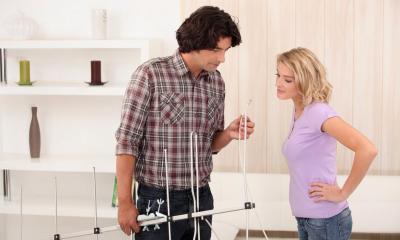
(last updated July 2019)
Television and communications is a fast-changing industry where technological developments can lead to major hardware changes in a matter of a few years.
Television technology
Although Sky satellite broadcasting has been around in the UK since the 1990s (and BSB was launched a couple of years before that), the 2000s saw things really take off as Sky launched new services like digital broadcasting, interactive services, high definition (HD) and Freesat from Sky. Subscriber numbers increased, and a very substantial percentage of UK households now have Sky television. Sky continues to roll out new upgrade products and services, some of which offer opportunities to independent satellite installers.
The BBC collaborated with ITV to launch their own free satellite service (also called Freesat) in 2008.
Meanwhile, terrestrial television saw the launch of the Freeview digital service in 2002, and a switchover to digital-only broadcasting began at the end of the decade (and ended in 2012). A switch to digital prompted many viewers to upgrade their aerial to improve their picture quality.
Other technological developments in television - like OLED and plasma flat screens and high definition broadcasting - have helped to persuade people to upgrade their aerial to take full advantage of their new television. In the mid 2010s the number of standard definition (SD) channels only available to viewers with newer Freeview HD equipment continued to grow, presenting opportunities for sales of new TVs (all new TVs have Freeview built in) and Freeview recorders and tuners.
Recent years have seen large numbers of economic migrants coming to live and work in the UK, particularly from eastern Europe. This boosted demand for non-Sky and non-UK satellite services so that people can watch television channels from their home country. In the 12 months following the vote in June 2016 to leave the EU, net immigration dropped sharply, with the number of people migrating to the UK from EU countries falling by some 100,000 a year.
In January 2018 Sky announced plans to make all its channels and content available online by late 2018 or early 2019. This gives customers the option of doing away with a satellite dish. Sky will keep broadcasting by satellite but this will enable customers who can't have a dish, or don't want one, to get Sky.
The housing market
A house move often prompts people to get a new television aerial or satellite dish installed, so the housing market boom which lasted until 2007 was great for the industry. Unfortunately, the boom came to an end in 2008 and the market remained very flat into the early 2010s, although by mid 2013 things did seem to be improving. 2014 saw a much stronger housing market as the economy picked up, with some parts of the country seeing a return to boom conditions.
There was little growth in the housing market in 2015, with the total residential property transactions remaining at about the same level as 2014. There was little change in the first two months of 2016 but there was a surge in transactions in March due to the introduction of higher rates of stamp duty on the purchase of second residential properties prompting a rush to buy additional buy-to-let properties. The vote in June 2016 to leave the EU introduced a large degree of uncertainty into the market with a 6% fall in the number of transactions in August compared with the previous year. The number of housing transactions remained broadly flat after the referendum but fell slightly in 2017 and fell further again in 2018.
The future
The growth of internet television has reduced demand for aerials and dishes. During the mid 2010s BT went head-to-head with Sky by signing up a large amount of highly popular sports content for its internet-based BT Sport channel, which it initially made available free of charge to its broadband customers. Sky itself has seen its satellite subscriber base slowly shrinking for the past few years and it's forecast to continue to shrink, particularly as it has now made all its channels and content available online. The popularity of NowTV, Netflix and Youtube has also led to a growing amount of television content available online for viewers who have a smart TV or set-top box (or who watch on a tablet or computer) - much of it free to air.
Something also to be aware of is the likelihood of competition from installers previously employed by Sky. When it was growing its subscriber numbers, Sky recruited and trained large numbers of installers, and while it will probably always need some installers of its own, it's likely to need fewer and fewer as its subscriber numbers fall. This may mean more and more trained and experienced installers setting up in business on their own, making the industry even more competitive.
Keeping up with developments
Joining a trade association is an excellent way of keeping up to date with developments in your industry. The Confederation of Aerial Industries (CAI) is the main trade association representing aerial and satellite dish installers in the UK. You can find out more about the CAI on their website.
Subscribing to a relevant industry journal is another good way of staying up to date. The CAI publishes a quarterly journal, Feedback, available to both members and non-members. It's free to members, who can view it online or receive a hard copy.


